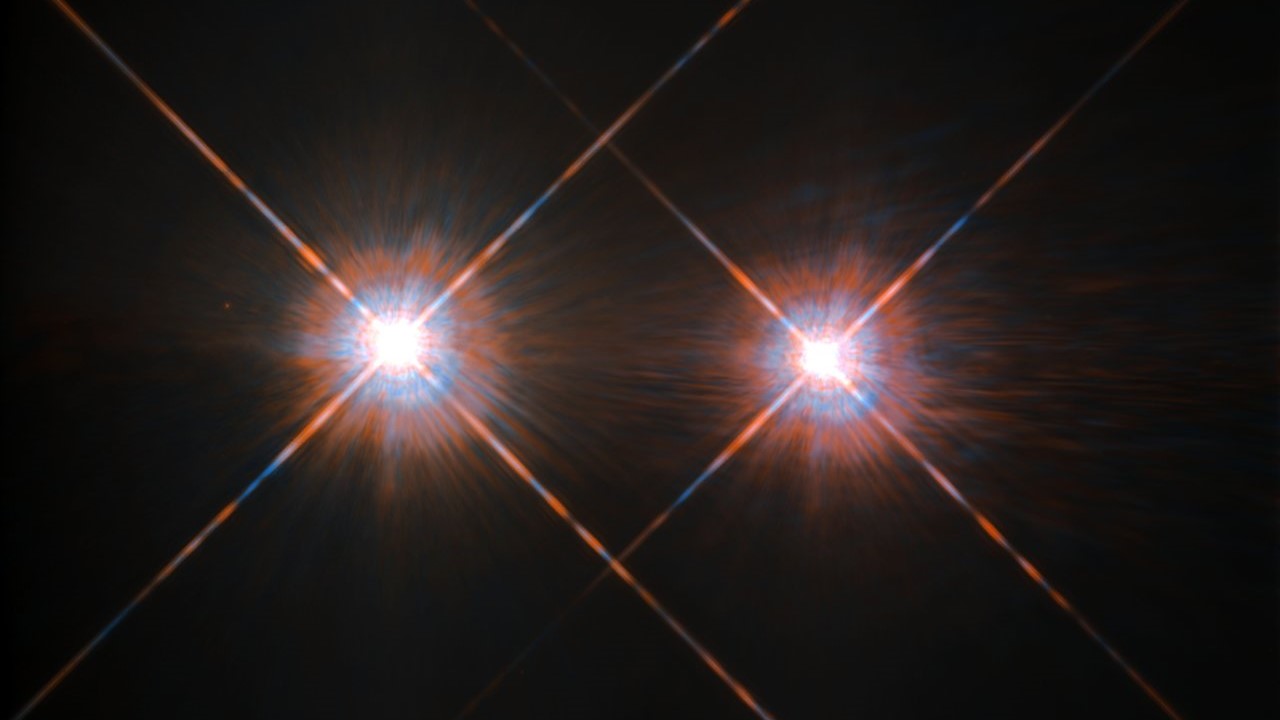What happened to the missing stars at the heart of our Milky Way galaxy?
The Milky Way's central supermassive black hole may be to blame.

Stars orbiting the supermassive black hole at the center of our Milky Way galaxy are mysteriously missing their binary companions, observations by the Keck Observatory in Hawaii have shown.
Stars often come in multiples. In our sun's neighborhood, the fraction of binary star systems stands at 70%, meaning that out of every 100 stars, 70 exist in binary systems. For massive stars this fraction is even higher, with almost all coming as binaries or triplets.
In the center of our Milky Way galaxy, however, it's a different story.
Related: Black holes of the universe (images)
A team led by Devin Chu of the University of California, Los Angeles, analyzed 10 years' worth of observations tracking 28 stars orbiting our galaxy's central supermassive black hole, which is known as Sagittarius A* and has a mass 4.1 million times that of the sun. The stars all orbit within one light-month (480 billion miles, or 777 billion kilometers) of the black hole.
Sixteen of these so-called "S-stars" — named after the black hole — are very young (less than six million years old) and are tens of times more massive than our sun.
"Stars this young shouldn't even be near the black hole in the first place," said Chu in a statement. "They couldn't have migrated to this region in just six million years, but to have a star form in such a hostile environment is surprising."
Get the Space.com Newsletter
Breaking space news, the latest updates on rocket launches, skywatching events and more!
Chu's team was searching for spectroscopic binaries. Sometimes, not even our best telescopes can resolve a binary system into two individual stars. In such cases, the only way to distinguish the components is by looking at their combined spectrum and observing a Doppler shift in the light caused by the stars orbiting around one another.
However, Chu's team found that none of the S-stars are binaries — all of them are singletons, confounding expectations that massive stars usually form in binary or even triplet systems. From their observations, Chu and his colleagues were able to place an upper limit on the fraction of binaries around Sagittarius A* as being 47% at most, far lower than in our sun's neighborhood.
"This difference speaks to the incredibly interesting environment of the center of our galaxy; we're not dealing with a normal environment here," said Chu.
Assuming that these massive stars did form as binaries, what became of their companions? One possibility is that the black hole's mighty gravity was able to split the binary systems, flinging one of the stars out of the galaxy entirely. This hypothesis is supported by the population of so-called hypervelocity stars that astronomers have observed racing out of the galaxy at more than 1 million mph (1.6 million kph).
Another possibility is that the black hole's gravity disrupted the binary systems enough for pairs of stars to collide and merge. The merged star would be rejuvenated, appearing much younger than it really is, which could help explain why stars that seem so young are found in an environment where it is unlikely they could have formed.
"This … suggests that the black hole drives these nearby binary stars to merge or be disrupted, which has important implications for the production of gravitational waves and hypervelocity stars ejected from the galactic center," said Chu. The next step, team members said, is to learn how the binary fraction changes with distance from Sagittarius A*.
The new study was published last week in The Astrophysical Journal.
Follow Keith Cooper on Twitter @21stCenturySETI. Follow us on Twitter @Spacedotcom or on Facebook.
Join our Space Forums to keep talking space on the latest missions, night sky and more! And if you have a news tip, correction or comment, let us know at: community@space.com.

Keith Cooper is a freelance science journalist and editor in the United Kingdom, and has a degree in physics and astrophysics from the University of Manchester. He's the author of "The Contact Paradox: Challenging Our Assumptions in the Search for Extraterrestrial Intelligence" (Bloomsbury Sigma, 2020) and has written articles on astronomy, space, physics and astrobiology for a multitude of magazines and websites.









